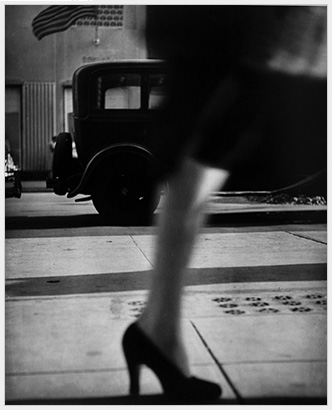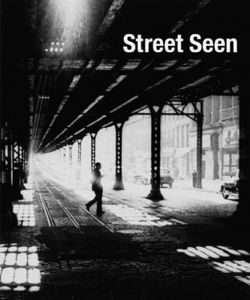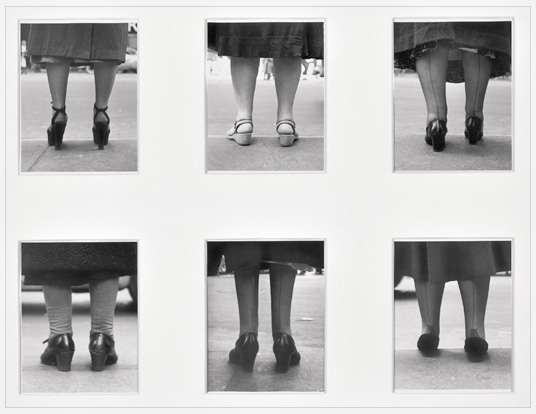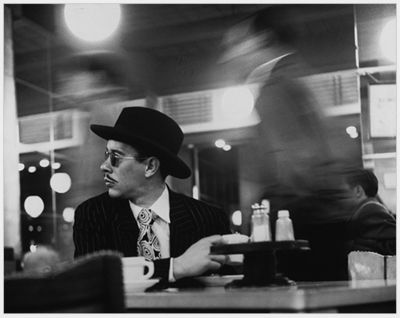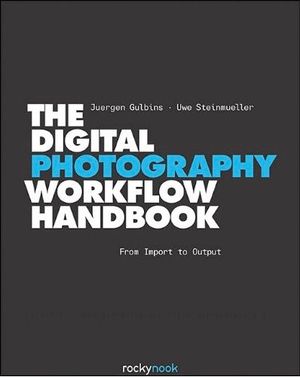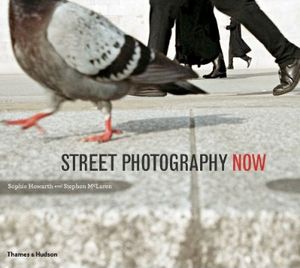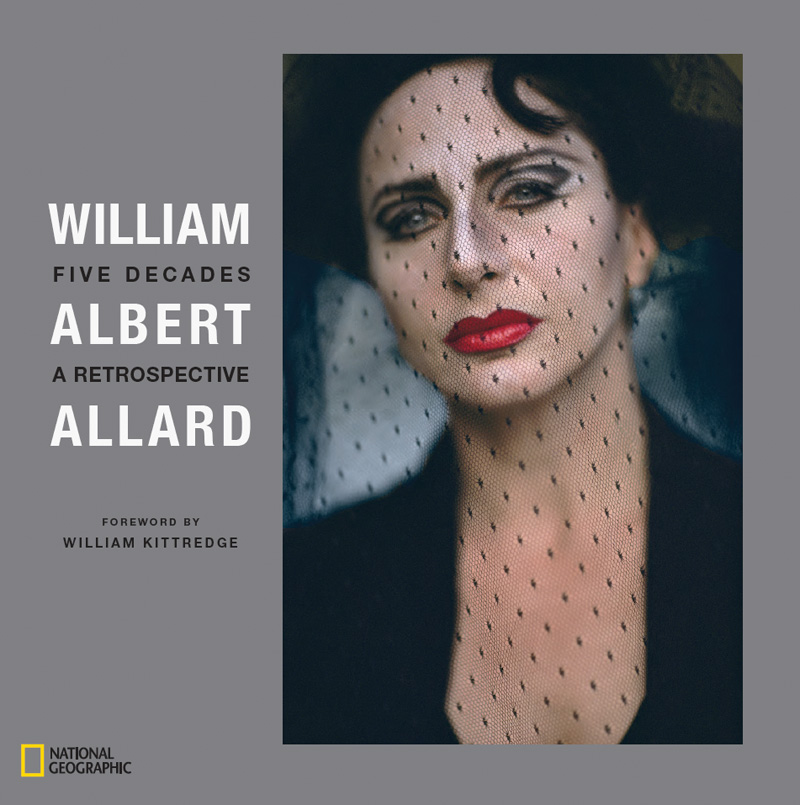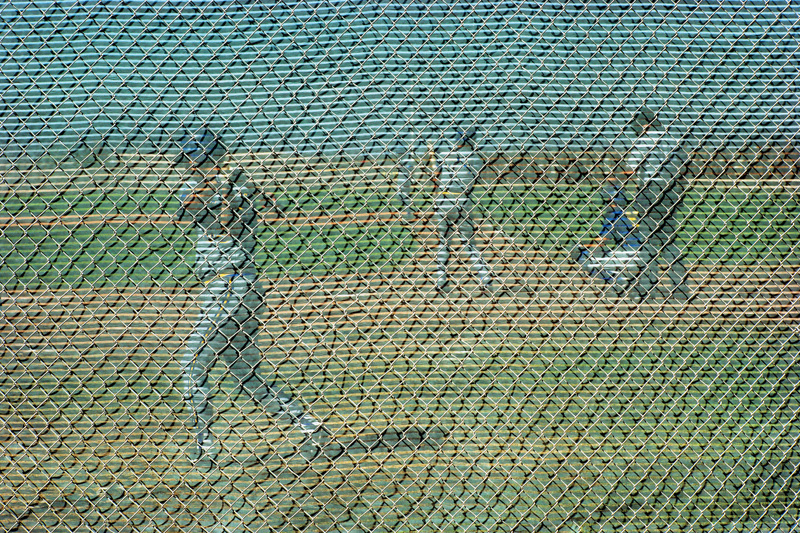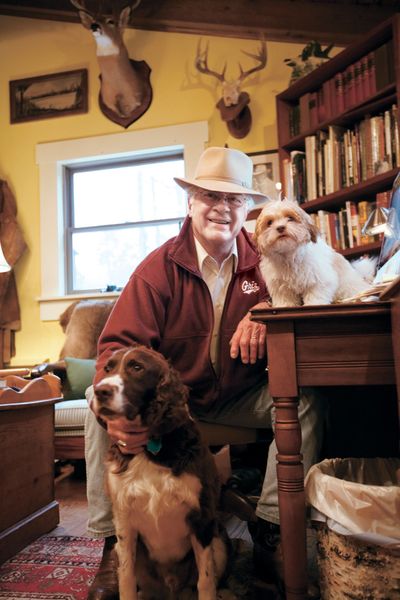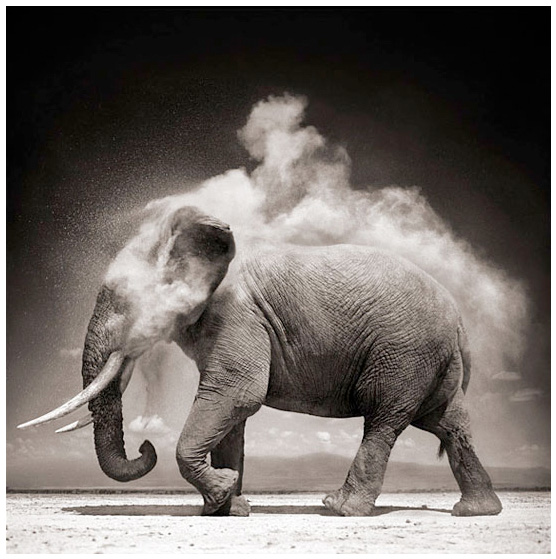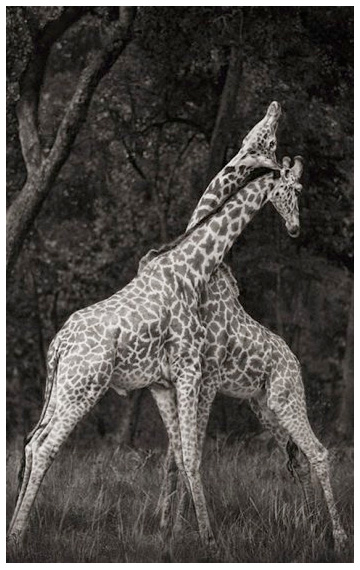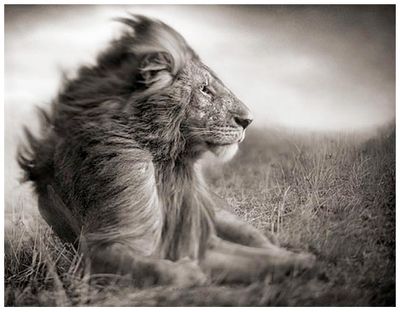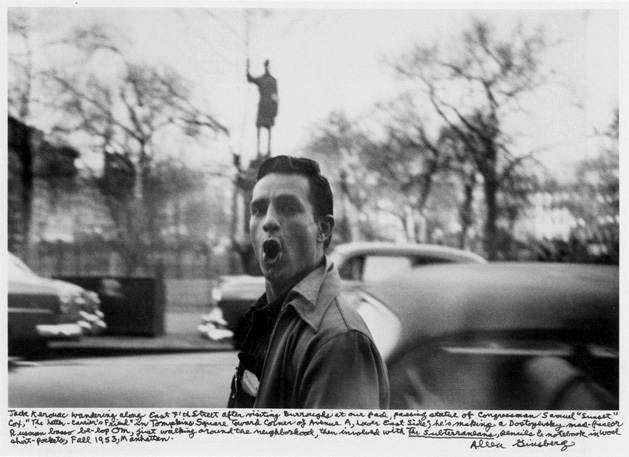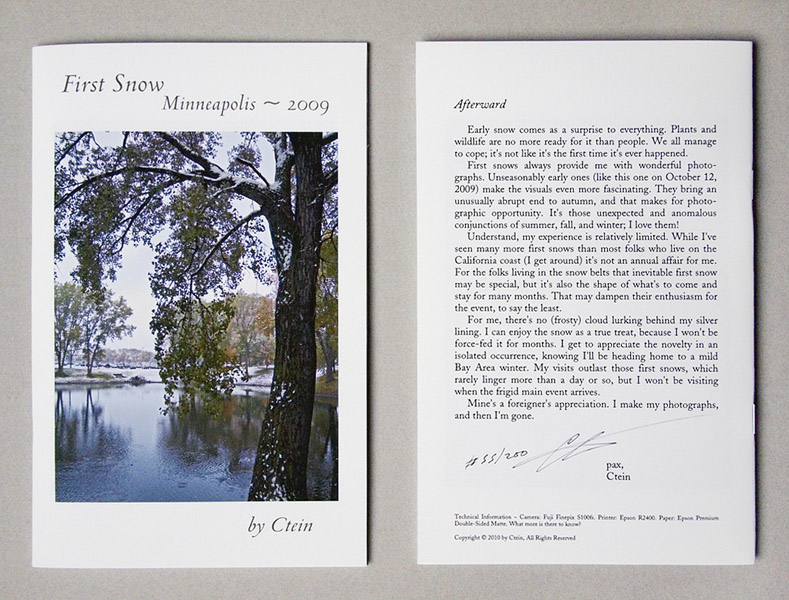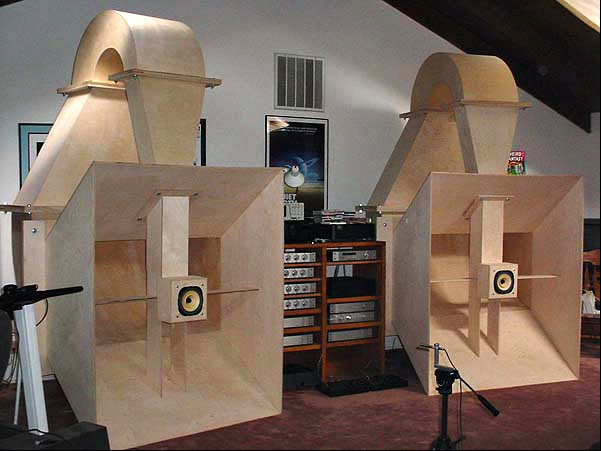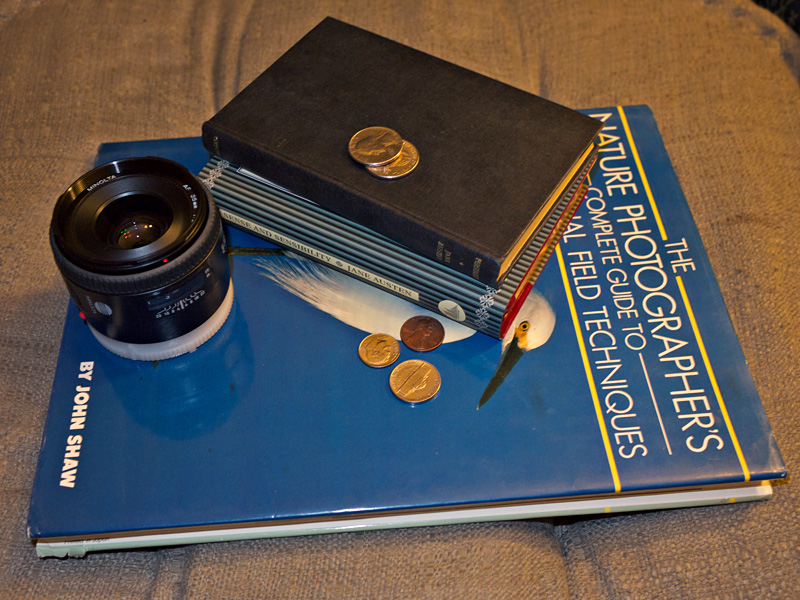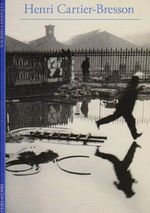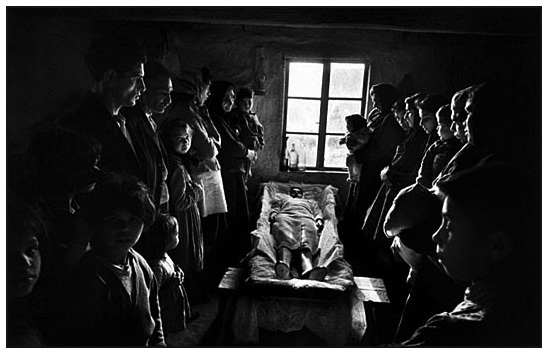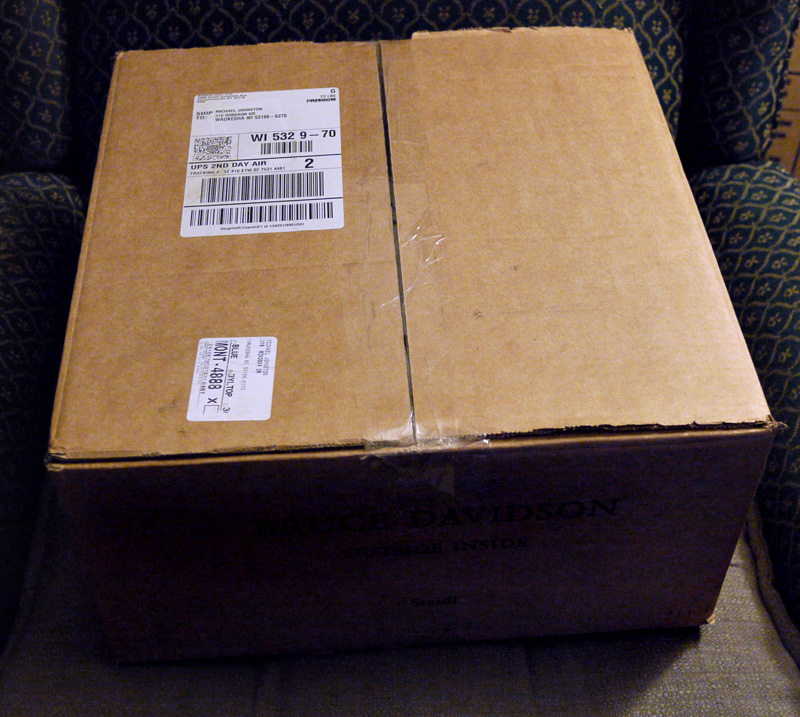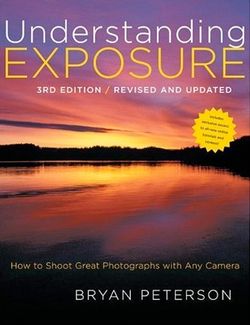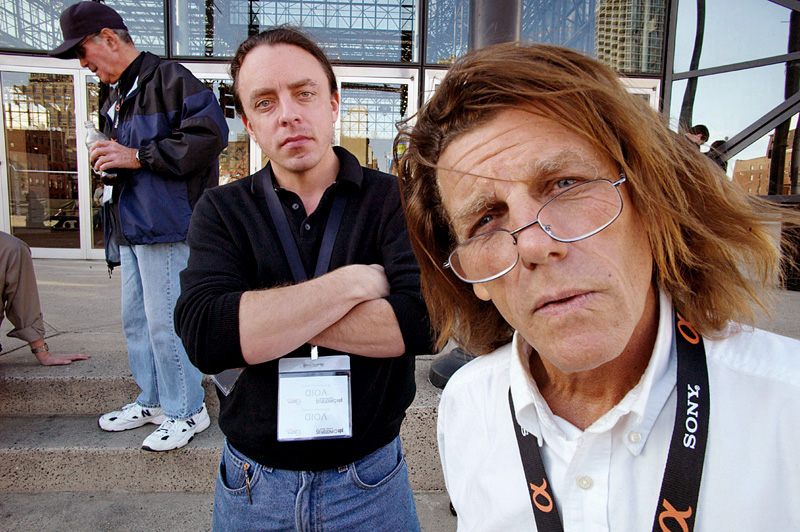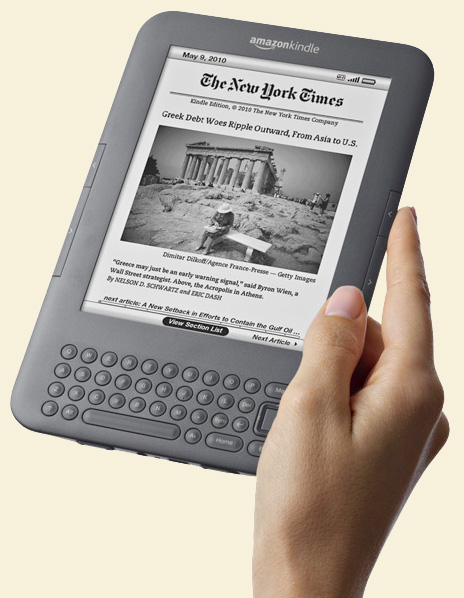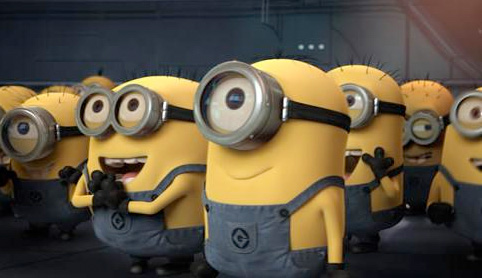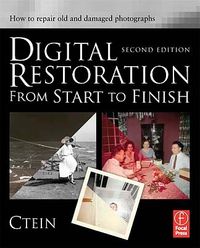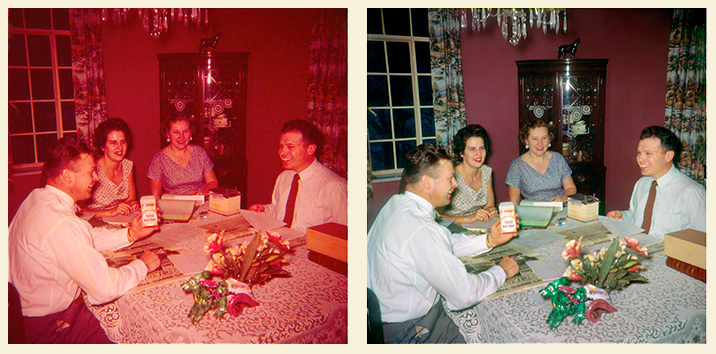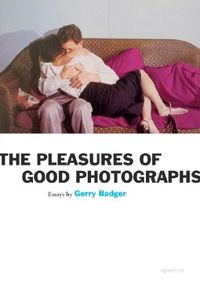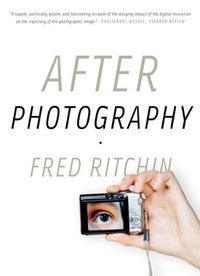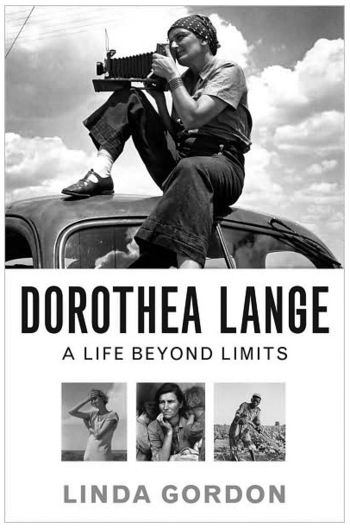It was surprisingly easy to decide what to put on this list. I thought it would be difficult, if not impossible, for the simple reason that we all want to know "how to" do different things. Photography's house is large, and contains many mansions.
I think the reason it was easy is that the list is so short. Make it more than a dozen and the sub-categories begin to get complicated. Beginner or veteran? Color or monochrome? Film or digital? But there are those books that are either so popular, good, admired, or lasting that including them on a short list comes by acclaim. You can of course quibble with individual choices (please).
Obviously there are many specialties and numerous areas in which a technical library could go into much greater depth, but all of these books contain much that any photographer could learn from—even the ones that don't address the kind of photography you happen to be interested in, or practice, right now.
Set-aside
...But first, a title apart: Ctein's Digital Restoration from Start to Finish. This book makes my personal top 12 list, but Ctein (the name is pronounced "kuh-TINE," and it's his whole legal name) is a friend and a long-time collaborator and contributor to The Online Photographer, and including him in the basic list could easily be seen as, if not a conflict of interest, then at least a conflict of objectivity. But in the main, the judgement about the book from TOP readers who've bought it is that its usefulness and interest go well beyond what the title promises.
Humbly submitted, then, here is TOP's list of the top tech titles.
Classic Large Format
1. The Ansel Adams Photo Series: The Camera , The Negative
, The Negative , and The Print
, and The Print , by Ansel Adams and Robert Baker (Little, Brown, 1995). (Best to consider this a matched set instead of three separate books—but you only need these three, and can dispense with auxiliary titles. Note also that I'm not recommending the "Ansel Adams Guides by John P. Shaefer." The correct ones to have are the ones at the links. I understand the covers of those have now changed, to all white.)
, by Ansel Adams and Robert Baker (Little, Brown, 1995). (Best to consider this a matched set instead of three separate books—but you only need these three, and can dispense with auxiliary titles. Note also that I'm not recommending the "Ansel Adams Guides by John P. Shaefer." The correct ones to have are the ones at the links. I understand the covers of those have now changed, to all white.)
Adams's technical writings were developed throughout his lifetime, starting with a rather opaque single volume called Making a Photograph: An Introduction to Photography way back in 1935, proceeding to the Morgan & Morgan volumes kicked off in 1948 that were reprinted numerous times, and culminating in this wonderful set from 1980. A thorough revision, carried out just before the master's death, these were made with the help of many people, including Adams's last assistant, John Sexton, co-author Robert Baker, and Jim Alinder, then the Director of the Friends of Photography in Carmel. Adams was an American institution by the time this project was done, and his publishers, The New York Graphic Society, spared no expense and took painstaking care over these books. Their clarity is admirable, and Adams's generosity, ebullience, experience and deep knowledge come off equally vividly.
The books have now segued (as Adams predicted, in these very pages, that
they would) into describing materials and processes that are
obsolescent and beginning to become historical. However, my feeling is that no photographer will fail to benefit from this extended encounter with Ansel Adams as teacher.
Recommended for the hardcore techie, meaning, dedicated large-format B&W photographers of a mathematical cast of mind who are not afraid to get into sensitometry—and purchase a densitometer: Beyond the Zone System by Phil Davis (Focal Press, 1998). Considerably more rigorous than Adams and Archer's Zone System.
by Phil Davis (Focal Press, 1998). Considerably more rigorous than Adams and Archer's Zone System.
Basic Digital
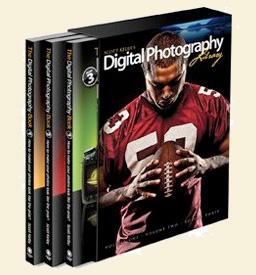
2. Scott Kelby's Digital Photography Boxed Set, Volumes 1, 2, and 3 (Peachpit Press, 2009). This might seem like a digital parallel to the above, because it's another three-volume set, but, really, there's nothing in the young field of digital that can remotely match the authority and time-tested seriousness of the Adams titles. Scott Kelby's books are best-sellers and widely enjoyed (he's been the #1 computer-book author for five years running—and I'll always be grateful for an important mention he gave to TOP in Layers magazine during our rather precarious early days). They're easy and fun to read and chock full of info. Big on tips 'n' tricks, they have something for everyone. Just one mild caution, which is not a criticism of the books but an admonition to the reader: the books repeatedly say they're telling you how to do things "like a pro," which is true, but bear in mind that "pro" pictures are generally (I say generally, son, generally) fashionable, competent, standardized, surfacey, and most often anonymous and interchangeable: there's nothing wrong with competence and the ability to get a clear picture when you need to, Lord knows, but a lot of devoted amateurs would rather know how to do things "like an artist" than "like a pro." I'm just sayin'; will go shut up now.
(Peachpit Press, 2009). This might seem like a digital parallel to the above, because it's another three-volume set, but, really, there's nothing in the young field of digital that can remotely match the authority and time-tested seriousness of the Adams titles. Scott Kelby's books are best-sellers and widely enjoyed (he's been the #1 computer-book author for five years running—and I'll always be grateful for an important mention he gave to TOP in Layers magazine during our rather precarious early days). They're easy and fun to read and chock full of info. Big on tips 'n' tricks, they have something for everyone. Just one mild caution, which is not a criticism of the books but an admonition to the reader: the books repeatedly say they're telling you how to do things "like a pro," which is true, but bear in mind that "pro" pictures are generally (I say generally, son, generally) fashionable, competent, standardized, surfacey, and most often anonymous and interchangeable: there's nothing wrong with competence and the ability to get a clear picture when you need to, Lord knows, but a lot of devoted amateurs would rather know how to do things "like an artist" than "like a pro." I'm just sayin'; will go shut up now.
If you already have one or more of the three volumes, you can buy the slipcase separately.
Like Bryan Peterson's Understanding Exposure that we were discussing the other day, Scott's trio is best suited for beginners and some intermediate photographers. If you no longer fit into those categories but would like a "core" digital text, I suggest waiting for the forthcoming new third edition of Peachpit's Real World Digital Photography
that we were discussing the other day, Scott's trio is best suited for beginners and some intermediate photographers. If you no longer fit into those categories but would like a "core" digital text, I suggest waiting for the forthcoming new third edition of Peachpit's Real World Digital Photography by Katrin Eismann, Sean Duggan, and Tim Grey, which should be along shortly. It's available for pre-order now.
by Katrin Eismann, Sean Duggan, and Tim Grey, which should be along shortly. It's available for pre-order now.
Concepts and Approaches
3. On Being a Photographer: A Practical Guide by Bill Jay and David Hurn (Lenswork Publishing, 2007). Ominously, this essential book is listed as "out of stock" at the publisher, and has been for some time now, if I'm not mistaken, and there is at least a chance that there are issues over the rights following the recent death of co-author Bill Jay (I am going to miss Bill Jay). If you don't have it yet, better turn over rocks (if not move mountains) to acquire it while you can. Of course, maybe it's just awaiting its next printing. But ya never know. (There is a "DVD Version" listed at Lenswork without much elaboration. Don't know about that, but I'll try to find out.)
by Bill Jay and David Hurn (Lenswork Publishing, 2007). Ominously, this essential book is listed as "out of stock" at the publisher, and has been for some time now, if I'm not mistaken, and there is at least a chance that there are issues over the rights following the recent death of co-author Bill Jay (I am going to miss Bill Jay). If you don't have it yet, better turn over rocks (if not move mountains) to acquire it while you can. Of course, maybe it's just awaiting its next printing. But ya never know. (There is a "DVD Version" listed at Lenswork without much elaboration. Don't know about that, but I'll try to find out.)
The Professional
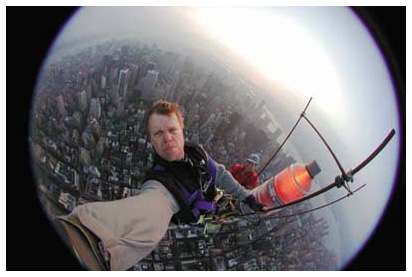
4. The Moment It Clicks: Photography Secrets From One of the World's Top Shooters It's gratifying that this book, which has lately been so popular, is so good. Joe McNally, who has the energy typical of pros but is, shall we say, unusually self-effacing and friendly, works at the more glamorous end of the profession, and he's a pretty unusual photographer, working at a high level—that's a pun for those in the know, as he's known for working at high levels, literally—that's a self-portrait, above—but also finding time and funding for a massive personal project making portraits of 9/11 firefighters.
It's gratifying that this book, which has lately been so popular, is so good. Joe McNally, who has the energy typical of pros but is, shall we say, unusually self-effacing and friendly, works at the more glamorous end of the profession, and he's a pretty unusual photographer, working at a high level—that's a pun for those in the know, as he's known for working at high levels, literally—that's a self-portrait, above—but also finding time and funding for a massive personal project making portraits of 9/11 firefighters.
His book gives lots of really practical and genuinely valuable advice, but also gives you a very good window into what it's like to be a top pro today. You probably already have this, as it has been distributed to everyone on the planet able to pronounce the word "camera," but if for any reason you don't....
Light and Lighting
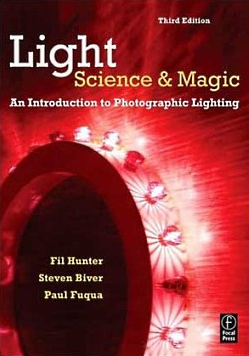 5. Light: Science and Magic: An Introduction to Photographic Lighting
5. Light: Science and Magic: An Introduction to Photographic Lighting By Fil Hunter, Steven Biver, and Paul Fuqua (Focal Press, 2007). Lighting is probably the photographic subject which is least often learned from books. It is, first of all, mainly the province of studio and commercial photographers, who have evolved among themselves a sort of extemporaneous apprenticeship system known, of course, as assisting. In return for working hard for low pay, the assistant learns the tricks of the trade from, as it were, the master of his or her choosing. Other ways of learning lighting might include hand-on classes at technical schools—the Art Center in Los Angeles and R.I.T. have outstanding courses in lighting—or simply through experimentation and the personal experience of trial and error. Among all these ways of gaining knowledge about lighting, books bring up the rear.
By Fil Hunter, Steven Biver, and Paul Fuqua (Focal Press, 2007). Lighting is probably the photographic subject which is least often learned from books. It is, first of all, mainly the province of studio and commercial photographers, who have evolved among themselves a sort of extemporaneous apprenticeship system known, of course, as assisting. In return for working hard for low pay, the assistant learns the tricks of the trade from, as it were, the master of his or her choosing. Other ways of learning lighting might include hand-on classes at technical schools—the Art Center in Los Angeles and R.I.T. have outstanding courses in lighting—or simply through experimentation and the personal experience of trial and error. Among all these ways of gaining knowledge about lighting, books bring up the rear.
This might not be the case if all books on the subject were as intelligent and knowledgeable as Fil Hunter and Paul Fuqua's. Their discussions range from "How Photographers Describe Light" and the concept of the family of angles, to specific surfaces and backgrounds and strategies of approaches to picturing different materials such as glass or metal. Our full review, by Geoff Wittig, is here. Geoff says of the book, "it is much easier reading than one would think; the concepts and their application flow so logically and are so clearly explained that it's entertaining rather than a dry slog."
In the category of lighting, two more books deserve mention. The first is our friend Kirk Tuck's great best-seller Minimalist Lighting: Professional Techniques for Location Photography , a book with a perfect title that is perfectly descriptive of the book's contents. The second is the companion book to The Moment It Clicks, Joe McNally's The Hot Shoe Diaries: Big Light from Small Flashes
, a book with a perfect title that is perfectly descriptive of the book's contents. The second is the companion book to The Moment It Clicks, Joe McNally's The Hot Shoe Diaries: Big Light from Small Flashes , which might be thought of as "Strobist in book form." But then, maybe David Hobby will one day write his own book....
, which might be thought of as "Strobist in book form." But then, maybe David Hobby will one day write his own book....
Photojournalism
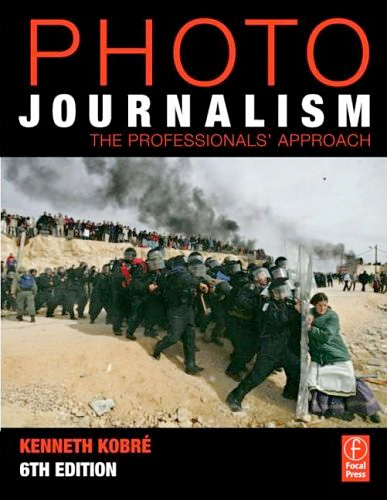
4. Photojournalism: The Professionals' Approach, 6th edition by Kenneth Kobré (Focal Press, 2008). This is the book that started me down the road to writing this post, when someone mentioned Professor Kobré's "Lightscoop" flash attachment in the comments the other day. The longtime "bible" of photojournalism and the most-used textbook on the subject. It's been around for years, and it's been years since I've seen it.
by Kenneth Kobré (Focal Press, 2008). This is the book that started me down the road to writing this post, when someone mentioned Professor Kobré's "Lightscoop" flash attachment in the comments the other day. The longtime "bible" of photojournalism and the most-used textbook on the subject. It's been around for years, and it's been years since I've seen it.
Subjects include:
- covering news, features, sports, politics and contemporary issues
- narrative picture stories
- finding features and catching candids
- environmental and interpretive portraits
- recording sound for multimedia and video
- shooting video
- creative use of the strobe
- digital shooting & darkroom techniques
- concept photography & illustrations
- newsroom politics
- picture editing
- shooting within the bounds of the law
- controversial pictures & ethical discussions
- expanded history of photojournalism
- internships and after
- freelancing and business practices.
Nature and Outdoor
7. Landscape Beyond: A Journey into Photography by David Ward (Aurum Press, 2008). Generations of color nature and outdoor photographers got kick-started by two essential books: Galen Rowell's Mountain Light
by David Ward (Aurum Press, 2008). Generations of color nature and outdoor photographers got kick-started by two essential books: Galen Rowell's Mountain Light (currently out of print) and John Shaw's original Nature Photographer's Complete Guide to Professional Field Techniques of 1984, the cover of which was a white egret on a blue background (a revised, updated version from 2001 is available as John Shaw's Nature Photography Field Guide
(currently out of print) and John Shaw's original Nature Photographer's Complete Guide to Professional Field Techniques of 1984, the cover of which was a white egret on a blue background (a revised, updated version from 2001 is available as John Shaw's Nature Photography Field Guide ). David Ward's book is exemplary among a more recent crop of titles, and reflects the vibrant British nature photography scene. And you've got to love a book the first chapter of which is entitled "Simplicity."
). David Ward's book is exemplary among a more recent crop of titles, and reflects the vibrant British nature photography scene. And you've got to love a book the first chapter of which is entitled "Simplicity."
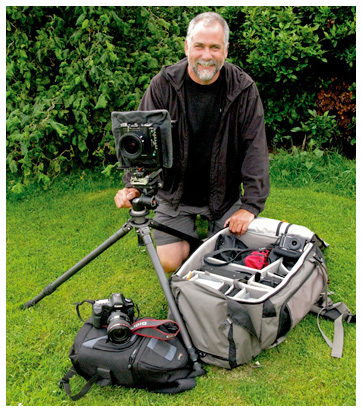
David Ward. Photo courtesy Calumet U.K.
Geoff Wittig reviewed this book for us last year. He said, "Landscape Beyond is David Ward's eloquent, thoughtful
exploration of the aesthetic structure of landscape photographs. This is
several planes higher than the customary 'rule of thirds, golden hour
light' type of discussion. Ward instead delves into perceptual theory,
the properties of beauty, and the nature of mystery. The book is
illustrated by his photographs, which are quietly breathtaking. They
convey an impression of the contemplative beauty to be found in the
natural world."
Image Editors
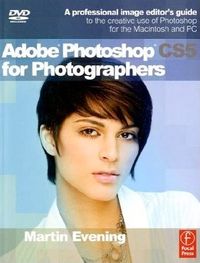 8. Adobe Photoshop CS5 for Photographers: a professional image editor's guide to the creative use of Photoshop for the Macintosh and PC
8. Adobe Photoshop CS5 for Photographers: a professional image editor's guide to the creative use of Photoshop for the Macintosh and PC by Martin Evening (Focal Press, 2010). Criticisms that this book is long, thorough, and complicated have always struck me as slightly absurd: Photoshop itself is difficult, complex, and definitely industrial-strength, indisputably the app of choice for imaging professionals. Why buy any book that won't help you master it thoroughly? A simple, dilettante-friendly book about Photoshop would be analogous to a book called "Anybody Can Fly a Fighter Jet—in Six Easy Steps!!!" Yep, tough subject: so is calculus or vascular surgery. You're not going master it from your easy chair with a game on.
by Martin Evening (Focal Press, 2010). Criticisms that this book is long, thorough, and complicated have always struck me as slightly absurd: Photoshop itself is difficult, complex, and definitely industrial-strength, indisputably the app of choice for imaging professionals. Why buy any book that won't help you master it thoroughly? A simple, dilettante-friendly book about Photoshop would be analogous to a book called "Anybody Can Fly a Fighter Jet—in Six Easy Steps!!!" Yep, tough subject: so is calculus or vascular surgery. You're not going master it from your easy chair with a game on.
The 2010 edition contains a well-received DVD.
Of course, it obviously only makes sense to buy a how-to book about software if it covers a program you use. So, alternately:
...For Aperture: Apple Pro Training Series: Aperture 3 by Don Scoppettuolo. I have it on inside authority that this is the book that Apple's Aperture tech support people are trained on. It also includes a well-regarded DVD.
by Don Scoppettuolo. I have it on inside authority that this is the book that Apple's Aperture tech support people are trained on. It also includes a well-regarded DVD.
...For LightRoom 3: I don't use LightRoom, and don't know enough about the available books to make a choice. However, TOP reader Bahi Para, who teaches Lightroom, tells me "For Lightroom 3, I'm happy to report that the standard is really high but there are still two that stand out: Kelby and Evening
and Evening ." He notes Kelby's distinctive sense of humor and his talent for conveying a lot of information straightforwardly, and says Evening is for slightly more technically-minded people who might not enjoy Kelby's lighthearted approach.
." He notes Kelby's distinctive sense of humor and his talent for conveying a lot of information straightforwardly, and says Evening is for slightly more technically-minded people who might not enjoy Kelby's lighthearted approach.
...for GIMP: Grokking the GIMP online—read it online, download for free, or buy a printed copy. Shouldn't a free program have free documentation?
Optics and Lens Focal Lengths
9. EF Lens Work III: The Eyes of EOS. (Canon, Inc. Lens Product Group, 2008. Currently backordered). This might seem like a throwaway on this list, but not so. What's more important than understanding lenses and focal lengths? My own object of obsession in this category, long ago, was The OM System Lens Handbook, a book I almost memorized. (You can always tell which company is really feeling its oats at any given point in history: it's the one with the book out.) Although this is overtly a catalog of one manufacturer's products, you shouldn't necessarily avoid it for that reason. The discussions and examples of focal lengths and the copious supporting material—much of it excellent, especially the sections on manufacturing and the science of optics—make this a great learning tool for photographers of all stripes. Even ones who shoot Nikon, Pentax, or Olympus! I wouldn't be without it.
EF Lenswork III is also available as a free download in several parts.
Legal Handbook
10. Legal Handbook for Photographers: The Rights and Liabilities of Making Images , by Bert Krages, Esq. (Amherst, 2006). What, this doesn't fall neatly into the "how-to" category for you? Well, it probably should. Bert Krages is the author of the deservedly famous "The Photographer's Right" page, a single sheet meant to be carried in your camera bag. Legal Handbook for Photographers is similarly succinct (128 no-nonsense pages) and similarly useful. Like it or not, we all deal with legal issues every day (especially these days) and your default shouldn't be ignorance. Not fun, maybe, but essential for any photographer.
, by Bert Krages, Esq. (Amherst, 2006). What, this doesn't fall neatly into the "how-to" category for you? Well, it probably should. Bert Krages is the author of the deservedly famous "The Photographer's Right" page, a single sheet meant to be carried in your camera bag. Legal Handbook for Photographers is similarly succinct (128 no-nonsense pages) and similarly useful. Like it or not, we all deal with legal issues every day (especially these days) and your default shouldn't be ignorance. Not fun, maybe, but essential for any photographer.
An augmentation for photographers beginning in business: Carolyn E. Wright, Esq.'s Photographer's Legal Guide . Carolyn Wright writes the popular Photo Attorney blog.
. Carolyn Wright writes the popular Photo Attorney blog.
Camera Raw
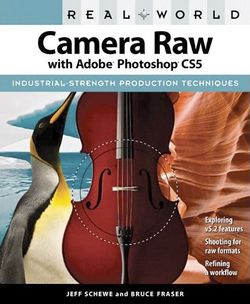 11. Real World Camera Raw with Adobe Photoshop CS5
11. Real World Camera Raw with Adobe Photoshop CS5 by Bruce Fraser and Jeff Schewe (Peachpit Press, 2010). I've made the case that what I'm about to describe is true of most books, from The Scarlet Letter to The Bush Dyslexicon. : books hit you different at different times of your life and at different stages of development. Certainly it's true of photo-technical books that they're better if they're there for you when you're ready for them. (Similarly, if you've moved beyond them, it becomes almost impossible to read them—it's been a long time since I was able to read a text on basic B&W printing, for instance. I've gotten to the point that I often know what books the authors were reading.)
by Bruce Fraser and Jeff Schewe (Peachpit Press, 2010). I've made the case that what I'm about to describe is true of most books, from The Scarlet Letter to The Bush Dyslexicon. : books hit you different at different times of your life and at different stages of development. Certainly it's true of photo-technical books that they're better if they're there for you when you're ready for them. (Similarly, if you've moved beyond them, it becomes almost impossible to read them—it's been a long time since I was able to read a text on basic B&W printing, for instance. I've gotten to the point that I often know what books the authors were reading.)
Anyway, I read the late Bruce Fraser's Camera RAW when Adobe Camera Raw (ACR) was new and Bruce's book was the first one on the market, and it opened up digital photography for me—previously, the headache of setting white balance (WB) for every shot was just an intolerable intrusion into the flow of shooting, and it was that or be frustrated by the camera's often addled guesses (although cameras have gotten better since then). I was ready for it, it was ready for me, and I had something as close to a Socratic experience as you can have with a tech book. Now there are a whole passel of camera raw books —even one "for Dummies." Justified or not, I retain an durable affection for this one, which has been, for several editions now, thoughtfully updated and revised by the imaging polymath Jeff Schewe. Friends don't let friends shoot JPEG.
—even one "for Dummies." Justified or not, I retain an durable affection for this one, which has been, for several editions now, thoughtfully updated and revised by the imaging polymath Jeff Schewe. Friends don't let friends shoot JPEG.
Okay, that last comment went overboard!
Not a book, but a nice way to learn RAW, especially (but not exclusively) if you use Adobe Lightroom, is Michael Tapes' excellent and expertly made video "RAW Without FUD" ("FUD" means fear, uncertainty, and doubt) from RawWorkflow.com, makers of the WhiBal.
Digital Printing
12. Mastering Digital Printing by Harald Johnson (Course Technology PTR, 2004). Although this is definitely the first book you should have about digital printing, it should almost be called an "everything but how to" book. It covers virtually everything about digital printing except, well, the nuts 'n' bolts of how to actually do it. That might be part of what makes this book so useful and so enduring—it doesn't get caught in the trap of describing a limited set of ephemeral and transitory hardware and software products. You'll probably have to learn how to print online anyway, since everyone has their own combination of camera, software, and printer and the issues are often particular to each. But this is a great backgrounder. It sits on my shelf next to The Printed Picture
by Harald Johnson (Course Technology PTR, 2004). Although this is definitely the first book you should have about digital printing, it should almost be called an "everything but how to" book. It covers virtually everything about digital printing except, well, the nuts 'n' bolts of how to actually do it. That might be part of what makes this book so useful and so enduring—it doesn't get caught in the trap of describing a limited set of ephemeral and transitory hardware and software products. You'll probably have to learn how to print online anyway, since everyone has their own combination of camera, software, and printer and the issues are often particular to each. But this is a great backgrounder. It sits on my shelf next to The Printed Picture by Richard Benson and Nash Editions: Photography and the Art of Digital Printing
by Richard Benson and Nash Editions: Photography and the Art of Digital Printing by Garrett White.
by Garrett White.
Oh, and for the nuts 'n' bolts missing from Harald Johnson's fine book? Try Uwe Steinmuller's Fine Art Printing for Photographers: Exhibition Quality Prints with Inkjet Printers, 2nd Edition from Rocky Nook. (I've also sent away for Vincent Oliver's printing DVD, but it hasn't arrived yet so I can't say anything about it.)
from Rocky Nook. (I've also sent away for Vincent Oliver's printing DVD, but it hasn't arrived yet so I can't say anything about it.)
There. I was determined to cram The Printed Picture on to this list somehow, even though it's a "what to" book rather than a how-to, and I finagled it.
Hope this list helps. I'd be interested in your contributions and criticisms. Cheers,
Mike
(Thanks to Geoff Wittig and Bahi Para)
Send this post to a friend
Note: Links in this post may be to our affiliates; sales through affiliate links may benefit this site. More...
Original contents copyright 2010 by Michael C. Johnston and/or the bylined author. All Rights Reserved.
Readers' Suggestions
Suggestions are welcome. Please tell us what you like and why you like it. And please, on the honor system, don't mention anything in which you have any stake or interest.
I won't be able to feature every suggestion, just a few, so be sure to see the comments for more.
Tim McGowan: "Great post, thank you. I've read a lot of photography 'how to's,' and the one book that really helped me with composition is... [Many more reader recommendations past the break —Ed.]
